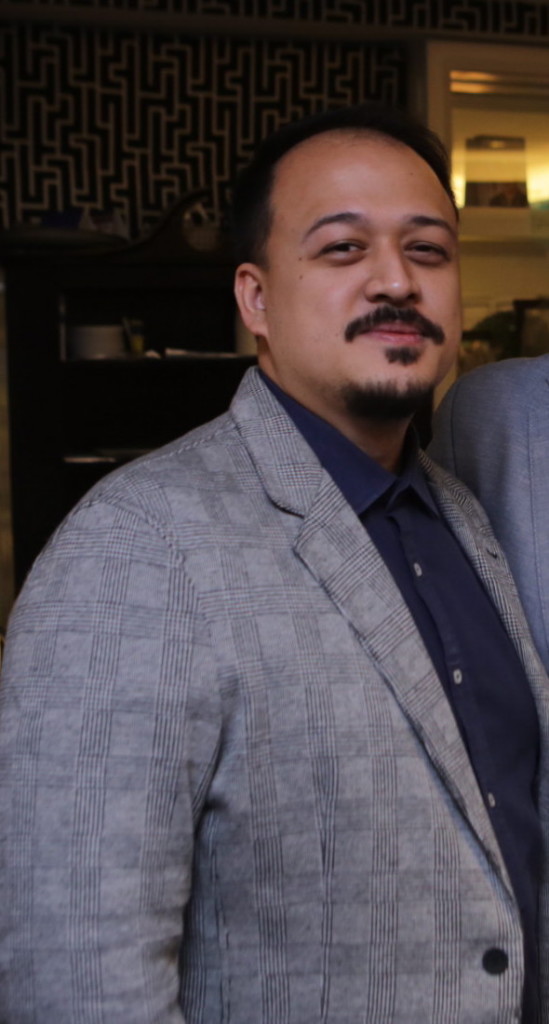Considered as the “mother of all arts,” architecture affects us directly since we spend 90 percent of our lives indoors. And as the country is poised to embark on its most ambitious infrastructure program in decades, several leading Filipino architects respond to architecture’s looming importance by organizing the fourth annual “Anthology.” Everybody, including non-architects, is welcome.

By Alex Y. Vergara
We may not be aware of it, but we spend 90 percent of our lives indoors or in buildings. Whether we like it or not, we interact directly with architecture every day. And the way buildings and spaces are designed directly affects our lives and how we move about. That’s the main message organizers behind “Anthology,” a three-day architecture and design festival from February 15 to 17 at the Fort Santiago in Intramuros, want to convey to Filipinos as well as foreign participants.
Now on its fourth year, the annual “Coachella of architecture,” as its organizers liken it to, “Anthology” brings together 5,000 participants and 125 speakers, mostly seasoned architects, from various parts of the country and the world. And since architecture, considered during the Renaissance as the “mother of all arts,” affects all of us, the festival is open to anyone—students as well as practitioners and non-practitioners.
And like a music festival, not a few of the semi-outdoor events will happen simultaneously. Based on what resonates with the participant, it would be up to him or her to choose what event or workshop to attend. That’s why it pays to know the schedule in advance and to sign up early.

On top of the knowledge and insights they get, participants who avail themselves of the three-day all access pass get a chance to go home with plenty of giveaways, says architect Rebecca Plaza, this year’s festival director as well founder and managing director of Plaza + Partners, Inc.
The purpose of “Anthology,” Rebecca adds, can be summed up into three: To help students from all over the country gain a better understanding of what architecture is; to elevate the level of architecture and design; and to show to the community architecture’s direct impact in the way people move about. After all, in its broadest sense, architecture goes beyond the design of buildings and houses, but also encompasses urban planning and the design of outdoor spaces.

“The theme of this year’s festival is ‘Impact,’” says Rebecca. “Now, more than ever, the Philippines is spending more on infrastructure. It’s very important to focus on what we’re doing. It’s important to do all these quickly, but they must also be planned and designed well. Architecture can really play a great role in nation-building and moving forward in creating cities for the 21st century.”
Apart from the daily featured speakers, “Anthology” has also scheduled a number of workshops, panel discussions and informal activities, including nightly parties to cap off each day. Among the topics to be discussed are “The Past and Future of Sustainable Planning and Design,” “Asian Megacities 4.0” and “Shaping Cities in an Urban Age” by such industry experts as Qingyun Ma, Ole Schereen and Roland Schnizer, to name a few.
On the local front, such leading Filipino architects as Cathy Saldaña, Stephanie Tan-Braquinho, Sudarshan Khadka Jr. and William Ti Jr. are also giving talks. Having passed on the baton to Rebecca, William, who organized and oversaw the first three editions of “Anthology,” would be giving a talk for the first time in the annual event.

Cathy will give a talk on sustainable development goals not just for architecture and planning, but also for the world and the environment. To make it more relevant, she would focus on these goals’ applications in the Philippines.
“We’re here not just to educate fellow architects, but also to inform the public,” says Cathy. “Architecture and design are not just about designers. It’s about people as well. As a celebration, what’s nice about this festival is it also brings to the fore students and developers to the centerstage. The whole focus is your life is affected by what we design.”
Stephanie, who’s hosting a discussion on global practice, promises an “amazing” lineup, including a number of foreign partners from Austria. Those who dismiss the Philippines as not being part of the epicenter of architectural development should rethink their position.
“Actually, there are lot of firms looking at us,” says Stephanie. “And the Philippines represents growth in the world. We have one of the youngest populations in the world with an explosion of growth and education. Before, we follow. But now, we are the ones other people are looking at to lead the future.”
For his part, Sudarshan is partnering with two design firms, as he holds a three-day workshop involving eight teams consisting of four members each from different schools. The workshop also doubles as a competition among these young participants.

“I’m trying to help them understand better the value and definitions in architecture and how that relates to architectural translation,” he says. “We feel like the most basic ideas have the largest impact. What is architecture to them and hopefully be able to make a translation on actual projects.”
The first-ever “Anthology” was held at Plaza Roma just directly in front of the Manila Cathedral also in Intramuros. From 2,000 participants in 2016, the event attracted 3,000 in Parian at 2017 and 5,000 at Fort San Tiago in 2018. To keep this year’s event manageable, Rebecca and her collaborators have decided not take in more than 5,000 people.
But William, for a number of reasons, nixed Rebecca’s suggestion of holding the festival in a more open space like Cavite to make it akin to Coachella. Sentimental reasons aside, the Manileño architect believes that despite its many flaws, Manila, including Intramuros, is still a major cosmopolitan center. Architecture being an “urbanist and cosmopolitan endeavor,” he says, the capital’s place in the life of the country should be highlighted and celebrated.

“At the end of the day, if you want to have a presence in the world, Manila is still our best chance (to get noticed),” William reasons. “So, we shouldn’t abandon our capital and think about frivolous gatherings in (say) Clark, Pampanga.”
Not a few people outside of “Anthology” wanted a more modern and orderly place like Bonifacio Global City (BGC) as the event’s venue. But if our aim is to impress people, especially foreigners, none of them would be impressed with BGC, William continues. It would just look like any modern city in the world with more than its fair share of skyscrapers.
“Intramuros is what makes us unique in the region,” he concludes, referring to the vestiges of the country’s Spanish colonial past. “We can’t just keep on selling the beach, which we have. Every tropical country in Southeast Asia has a beach. But what is truly ours is Intramuros. It’s one of the best preserved walled cities in the world.”
The 2019 “Anthology Architecture + Design Festival” will be held from February 15 to 17, 2019 at Fort Santiago, Intramuros, Manila. For more information on tickets and the full program schedule, visit https://anthologyfest.org





